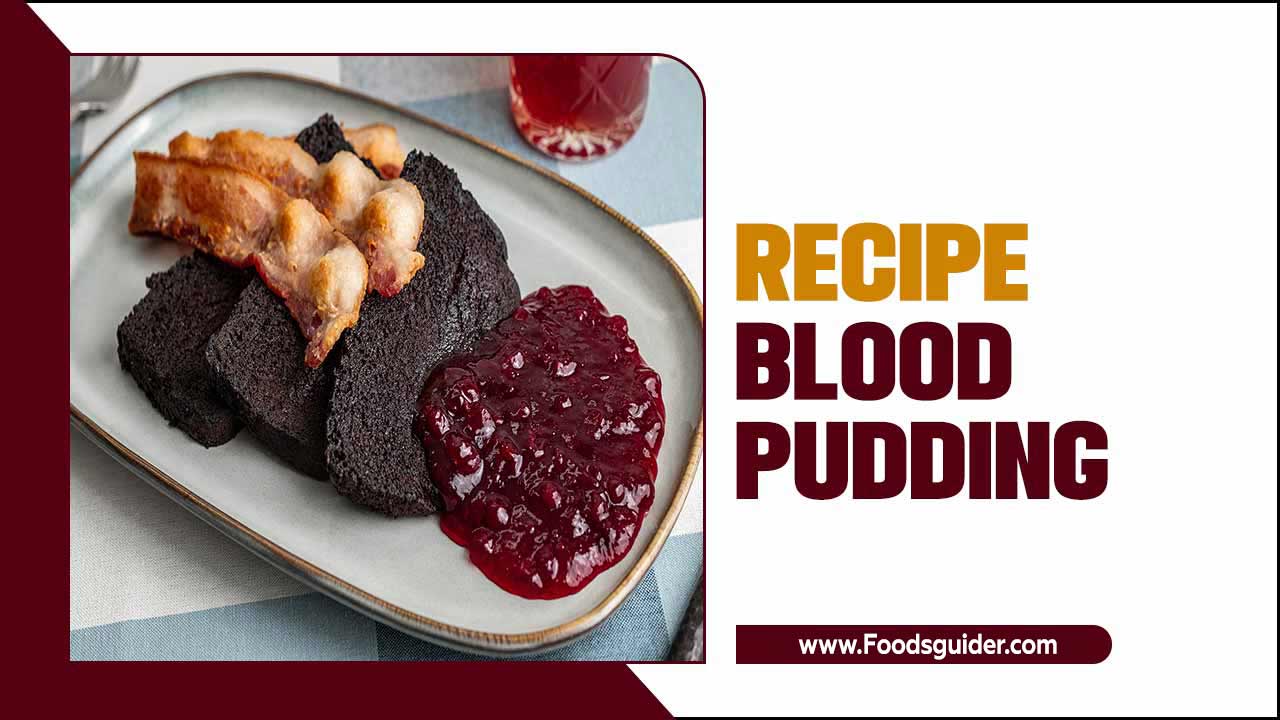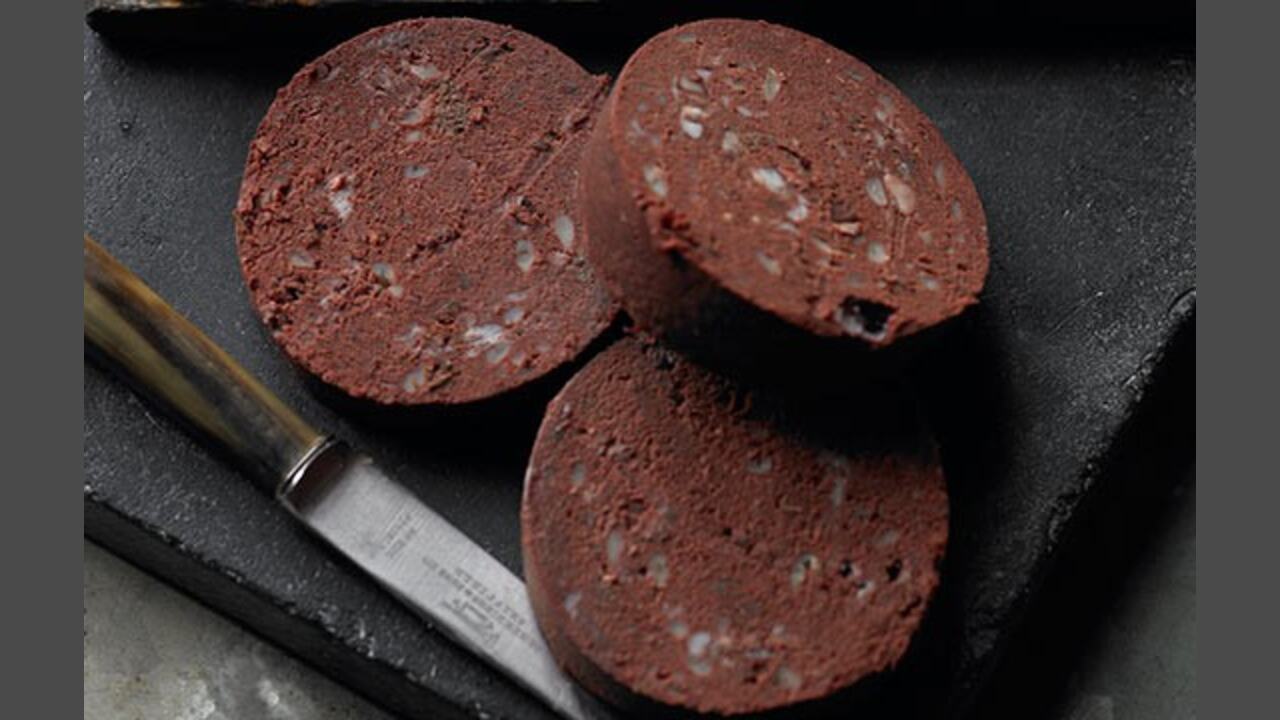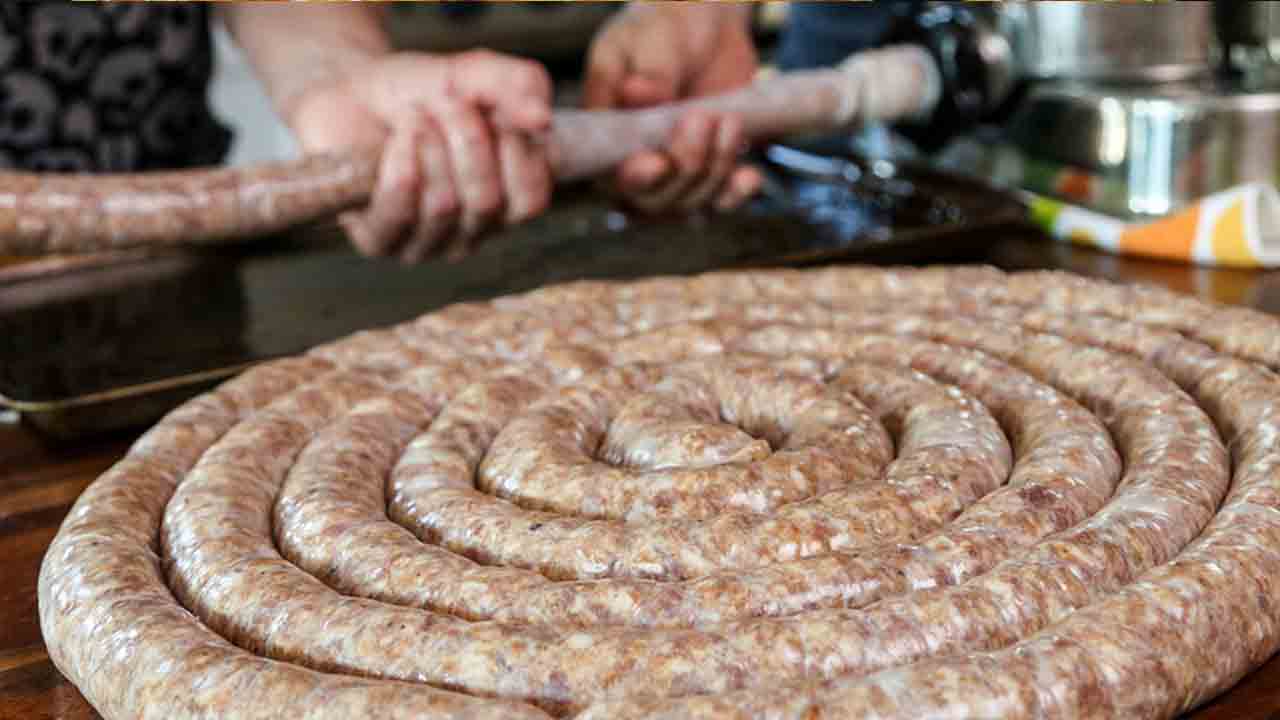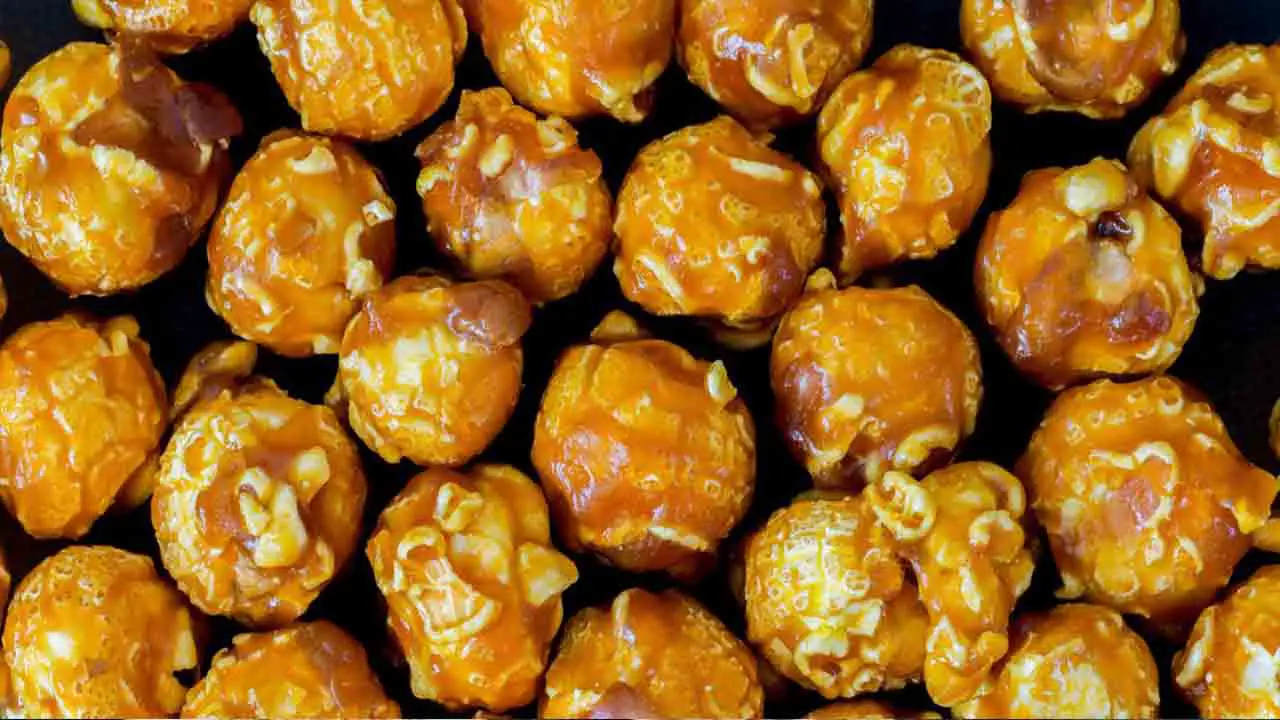Cooking is a skill that requires a lot of creativity, passion, and dedication. While some may find it intimidating, others consider it art. No matter where you are in your culinary journey, there is always room for improvement.
One way to elevate your skills in the kitchen is by experimenting with different ingredients and recipes. And if you’re looking for a unique and delicious way to do that, you might want to try making recipe blood pudding.
Blood pudding, also known as black pudding, is a type of sausage that is made with pig’s blood, oatmeal, and various spices. It has a rich and distinct flavor that can add depth to any dish. In this blog post, we’ll explore the history and origin of blood pudding, its nutritional value, and some delicious recipe ideas you can try at home.

What Is The Process Of Cooking Recipe Blood Pudding?

Cooking blood pudding, also known as black pudding, is a process that requires a few key ingredients and careful preparation. To make blood pudding, you will need fresh or frozen pig’s blood, fatback or pork belly, onions, oatmeal or breadcrumbs, salt, pepper, and various spices such as cinnamon, nutmeg, and cloves.
First, combine the pig’s blood with the fatback or pork belly in a large mixing bowl. Then add onions, oatmeal or breadcrumbs, salt, pepper, and spices. Mix everything together until well combined. Next, mix the mixture into casings and tie the ends to form individual sausages.
Finally, place the sausages in boiling water and simmer for about an hour until cooked. Once cooked, you can enjoy blood pudding as part of a hearty breakfast or as a flavorful addition to other dishes.
Understanding The Main Ingredients Of Blood Pudding

Blood pudding, also known as black pudding, is a traditional dish that may not be for everyone due to its main ingredient – blood. People typically make blood pudding by combining animal blood, such as pig or cow, with other ingredients like oats, onions, and spices. The blood gives the pudding its distinct dark color and rich flavor.
Although it may sound unconventional, many cultures have enjoyed blood pudding for centuries. It is often served as part of a hearty breakfast or as a component in savory dishes. If you’re open to trying new flavors and want to experience a unique culinary tradition, blood pudding could be an interesting addition to your recipe repertoire.
Preparing And Cooking The Blood Mixture
Preparing and cooking the blood mixture is crucial in making blood pudding. First, you must collect fresh blood from a butcher or slaughterhouse. It is important to handle the blood carefully and keep it below 40°F (4°C) to prevent bacterial growth.
Once you have collected the blood, strain it through a fine-mesh sieve to remove any clots or impurities. In a large mixing bowl, combine the blood with various ingredients such as oats, onions, spices, and fat. Mix everything together until well combined.
Next, heat a large frying pan or skillet over medium heat and melt some fat. Carefully pour the blood mixture into the pan and cook it slowly for about an hour, stirring occasionally to prevent sticking. The pudding is done when it has thickened and set. Once cooked, allow the pudding to cool before slicing and serving.
Adding In Other Ingredients Like Oats, Spices, And Onions

When making blood pudding, it is common to add other ingredients, such as oats and spices, to enhance the flavor and texture of the dish. Oats often provide a hearty and filling element to the pudding, while spices like cinnamon, nutmeg, or allspice can add warmth and depth to the overall taste.
The exact measurements and proportions of these additional ingredients may vary depending on personal preference and regional variations of the recipe. Experimenting with different combinations of oats, spices, and other ingredients can help you create a perfect blood pudding that suits your taste preferences.
Stuffing The Mixture Into Casings Or Molds

Stuffing the blood pudding mixture into casings or molds is essential in creating its iconic shape. Whether using natural or synthetic casings, precision, and careful handling are required to achieve uniformity and proper cooking.
Molds can also be used to shape the blood pudding mixture according to preference. The result should be a visually appealing and delicious blood pudding. It is possible to create unique variations and experiment with different textures by utilizing different casings or molds. This process adds another layer of creativity and depth to the blood pudding recipe.
Cooking Methods For Blood Pudding (Boiling, Baking, Frying)
Boiling, baking, and frying are three popular cooking methods for blood pudding. Boiling is the traditional method that ensures even cooking and a soft texture. Baking, on the other hand, creates a crispy outer layer while retaining a moist interior.
Frying results in a crispy and caramelized exterior, adding a unique flavor and texture to the blood pudding. Each cooking method offers a different taste and texture profile, catering to different preferences. I recommend experimenting with these different cooking methods to find your favorite way to enjoy blood pudding.
Tips For Achieving The Perfect Texture And Flavor

People make blood pudding, a traditional Scottish dessert, using sheep’s blood, oatmeal, and other ingredients. People typically serve it warm or cold and often pair it with whiskey. When it comes to making blood pudding, achieving the perfect texture and flavor can be a bit tricky. Here are some tips to help you create a delicious blood pudding:
- Use Fresh Blood: For the best results, use fresh blood from a reputable source. This will ensure that the blood is of high quality and will contribute to the rich flavor of the pudding.
- Cook At Low Heat: Blood pudding requires slow cooking to achieve a smooth and creamy texture. Avoid cooking it at high temperatures, as this can cause the pudding to become dry and grainy.
- Add Breadcrumbs Or Oats: To give your blood pudding a nice texture, add breadcrumbs or oats to the mixture. This will help bind the ingredients together and prevent the pudding from becoming too dense.
- Season Well: Don’t forget to season your blood pudding with salt, pepper, and other spices according to your taste preferences. This will enhance the flavors and make for a more enjoyable eating experience.
- Allow It To Cool Before Slicing: After cooking, allow your blood pudding to cool completely before slicing it. This will help it set properly and make it easier to slice into neat portions.
Following these tips, you can create a delicious blood pudding to impress your friends and family.
Serving Suggestions And Accompaniments For Blood Pudding
Blood pudding, also known as black pudding or blood sausage, can be enjoyed in various ways with delicious accompaniments. Pair this savory delicacy with sautéed mushrooms or caramelized onions to complement its rich flavors. For a comforting and hearty meal, serve blood pudding with creamy mashed potatoes. If you prefer a lighter option, try serving it with a simple green salad dressed with vinaigrette. As a breakfast dish, blood pudding goes well with crispy bacon and a fried egg. To enhance the flavors, serve it with tangy-sweet fruit compote or chutney. Enjoy the versatility of blood pudding and explore different serving suggestions to suit your taste preferences.
Variations And Regional Differences In Blood Pudding Recipes

Blood pudding is a type of pudding made with sheep’s blood. People typically serve it as an appetizer or side dish at Christmas dinner. Blood pudding, also known as black pudding, is a traditional dish that varies in its preparation and ingredients across different regions. Here are some variations and regional differences in blood pudding recipes:
- British Blood Pudding: In the United Kingdom, blood is typically made with pork blood, fat, oatmeal, onions, and various spices. People often enjoy it as part of a full English breakfast because it has a rich and savory flavor.
- Spanish Morcilla: Spain has its own version of blood pudding called morcilla. It is commonly made with pig’s blood, rice or breadcrumbs, onions, garlic, and spices such as paprika or cinnamon. People can fry or grill morcilla, a popular ingredient in tapas dishes.
- French Boudin Noir: Blood pudding is popular as boudin noir in France. They make it with pig’s blood, pork fat or suet, onions, garlic, and various herbs and spices. People can serve boudin noir hot or cold and often enjoy it with apples or potatoes.
- German Blutwurst: Germany has its own take on blood pudding called blutwurst. It typically contains pig’s blood, pork fat or bacon, onions, bread crumbs or oats, and a mix of spices such as marjoram or thyme. Blutwurst is often boiled or pan-fried before being served.
These are just a few examples of variations in blood pudding recipes worldwide. Each region puts its own twist on this unique dish to create flavors that reflect their culinary traditions. Whether you prefer it grilled, fried, or boiled, there’s no denying that blood pudding offers a bold and distinctive taste experience.
Conclusion
To elevate your cooking skills and explore new flavors, try your hand at cooking recipe blood pudding. While it may sound unconventional, blood pudding is a delicious and rich dish that offers a unique taste experience. By understanding the main ingredients and following the cooking process, you can create a flavorful blood mixture that can be stuffed into casings or molds.
The cooking methods, such as boiling, baking, or frying, allow you to achieve the perfect texture and flavor. Serve your blood pudding with suggested accompaniments and experiment with variations to cater to your personal taste. With this recipe, you can expand your culinary horizons and impress your guests with a unique and tasty dish.
Frequently Asked Questions
1.Why Is Blood Pudding Illegal In The US?
Blood pudding, also known as black pudding, is not illegal in the United States. However, authorities may restrict or prohibit certain ingredients used in traditional recipes. Regulations vary by state, so it’s important to check local regulations and consult health authorities before preparing or selling blood pudding.
2.What Is The Difference Between Black Pudding And Blood Pudding?
Ans: Black and blood pudding is the same dish, made from pork blood, fat, and grain or starch. However, people interchangeably use “black pudding” and “blood pudding,” depending on the region. People in the UK and Ireland commonly refer to it as black pudding, while others know it as blood pudding. The flavor and texture may vary based on regional variations and the ingredients used.
3.What Is The Best Way To Eat Black Pudding?
Ans: Enjoy black pudding in a variety of ways. It can be pan-fried or grilled to achieve a crispy exterior. Some prefer it sliced and cold as part of a charcuterie board. You can also crumble it for use in stews or stuffing recipes.
4.What Are The Benefits Of Eating Blood Pudding?
Ans: Blood pudding offers several benefits. It is rich in iron, essential for hemoglobin and red blood cell production. Additionally, it provides important vitamins and minerals like B12, zinc, and selenium. This protein-rich food can be a valuable option for those following low-carb or keto diets while helping prevent iron deficiency anemia.
5.What Is Blood Pudding And How Does It Differ From A Regular Meatloaf?
Ans: Blood pudding, or black pudding, is a unique sausage made from pork blood and a blend of grains or other ingredients. It stands apart from regular meatloaf due to its dark color and distinctive flavor, often infused with cinnamon, nutmeg, and cloves.
